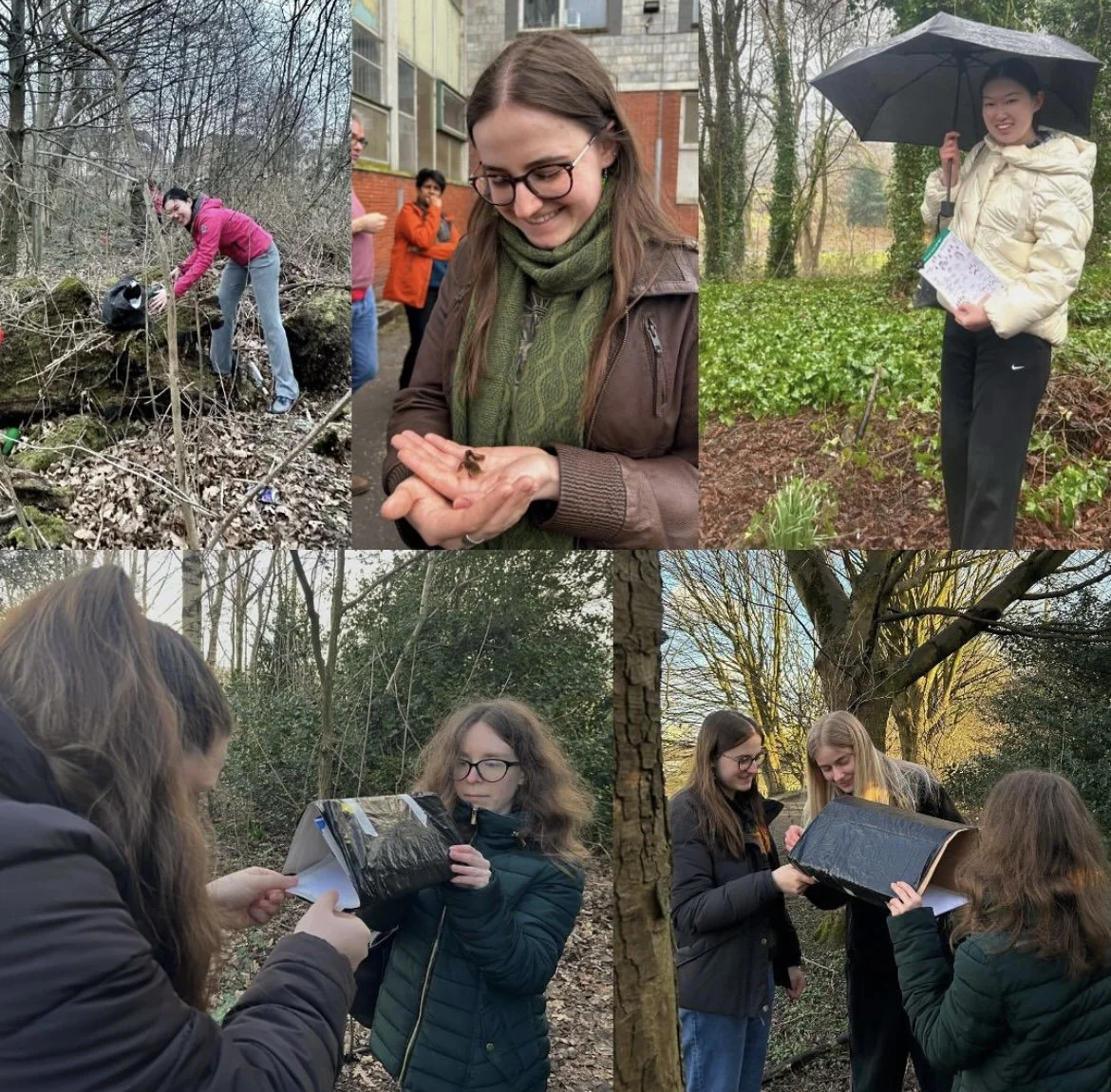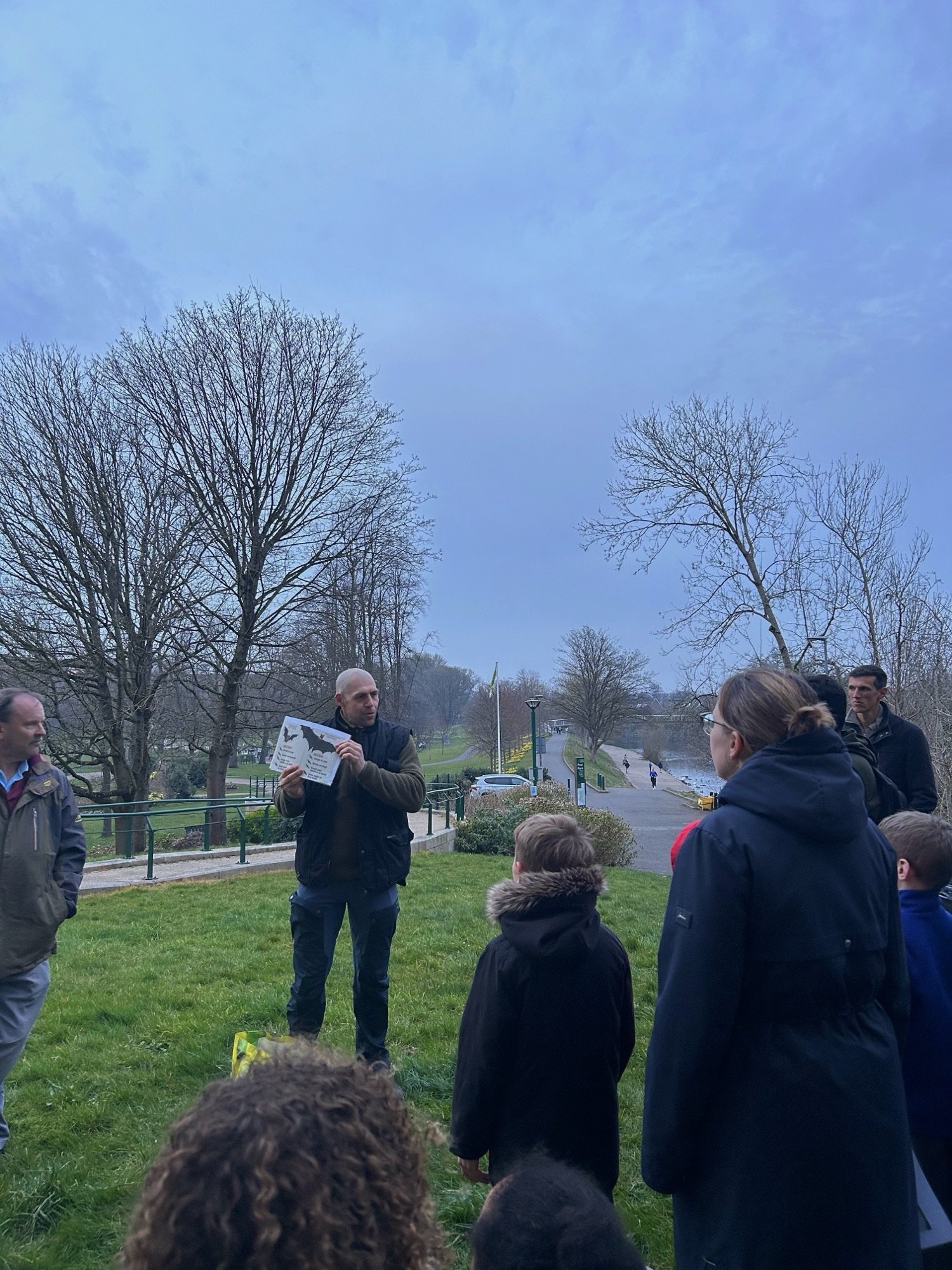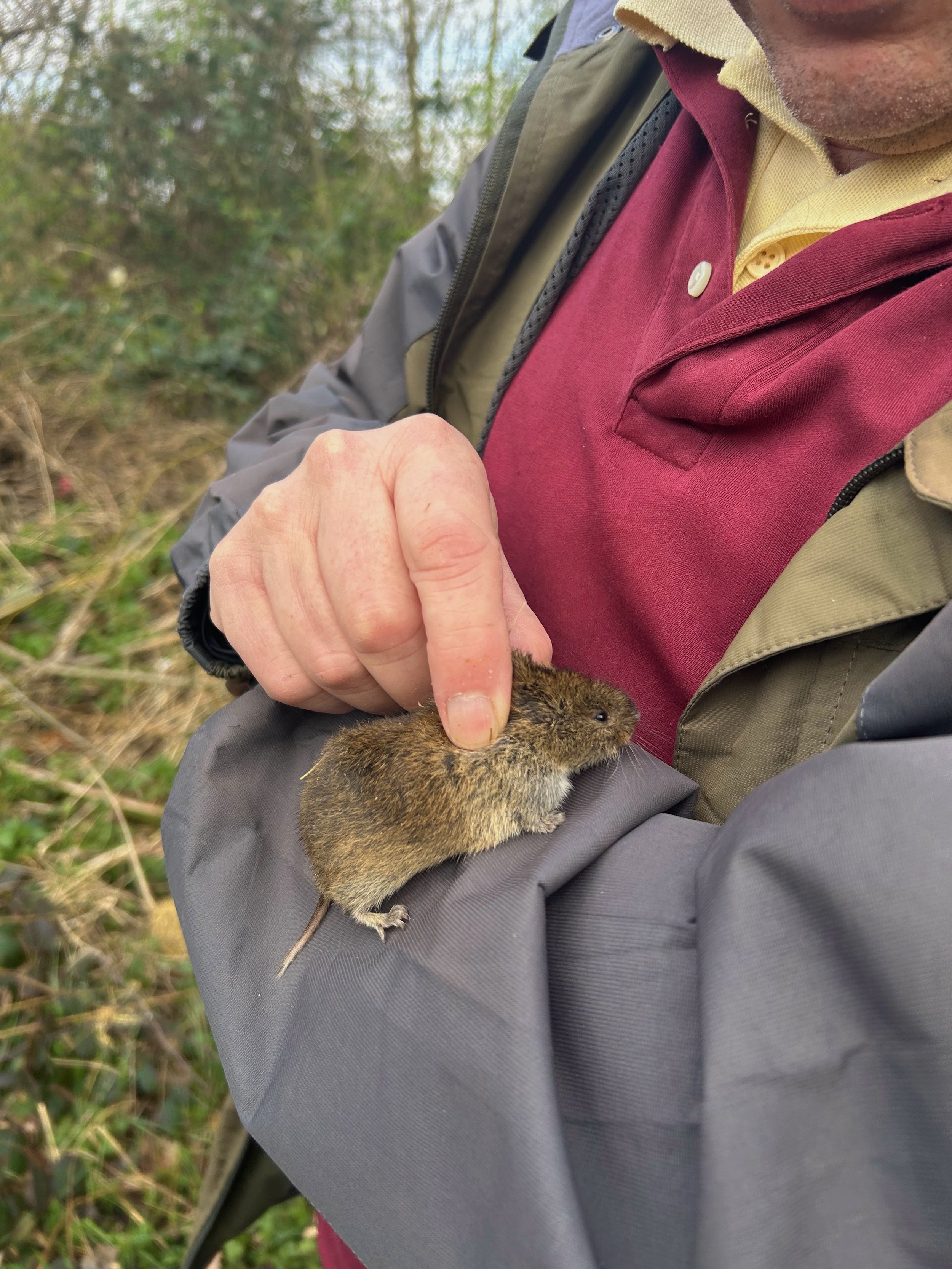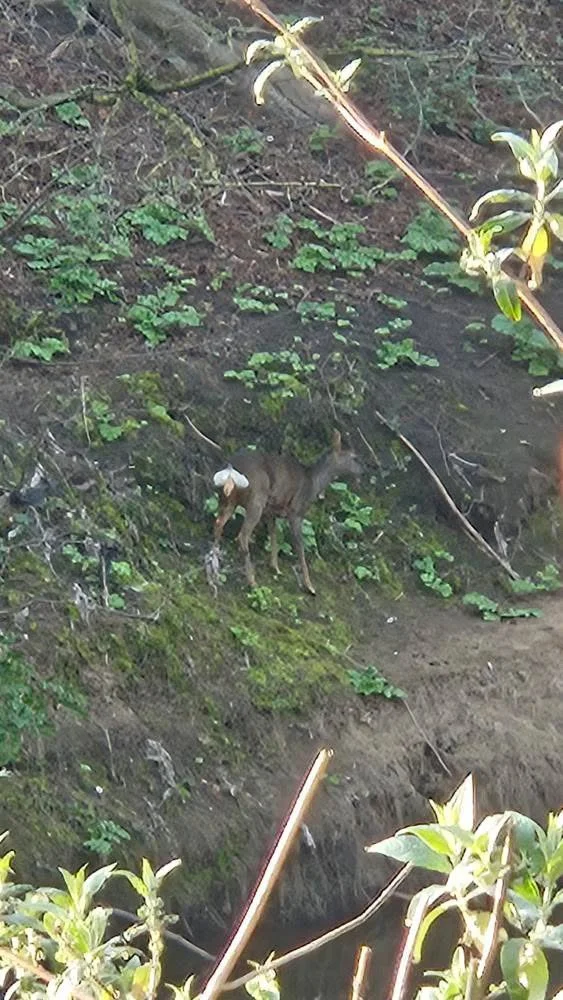Mammal Challenge Musings: What We Learned from UMAC 2025
Blog written by UMAC 2025 team The Salford Stoats
Salford Stoats participating in UMAC 2025. PC: Salford Stoats.
Over the last few months, our team, The Salford Stoats, took part in the University Mammal Challenge (UMAC), an exciting and hands-on initiative that pushed us beyond textbooks and into the real, living ecosystems around our university and local community.
From setting up mammal footprint tunnels to supporting community outreach events, the challenge allowed us to actively contribute to the conservation and understanding of UK mammals. It brought together students, professionals, and the public in a shared mission: to become more aware of the species living alongside us and the threats they face.
One of the most exciting aspects for our team was getting involved in the practical fieldwork. Jess G shared how rewarding it was to work with non-invasive techniques to monitor mammal activity. “We set up footprint traps using charcoal and vegetable oil to track local wildlife,” she explained. “It taught me a lot about subtle ways we can observe animals without disturbing them.” For her, it was also about connection: “Helping out at the local community centre gave me a chance to share what we’ve been doing—it made the project feel even more meaningful.”
Despite the many highlights, the journey wasn’t without its challenges. None of us came from a background directly related to the field, we weren’t ecologists nor biology students, but we were all united by a shared curiosity and passion to make a difference. At times, the unfamiliar terminology or tracking methods felt daunting, but we overcame these barriers by tapping into local resources like Seedley Pavilion Community Gardens, seeking advice from professionals, and leaning on the support of our local community networks. It was our determination and genuine interest in nature that helped us keep going and make the most out of every opportunity.
Heading out on a bat walk. PC: Salford Stoats.
As we spent more time outdoors and paid closer attention to the environment, many of us found our personal connection to nature growing deeper.
Jess W shared that the challenge sparked a major shift in her future plans: “It inspired me to take a Masters in Wildlife Documentary Filmmaking to raise awareness about threatened habitats.” She reflected on a moment of awe during a foraging walk with the Salford Rangers, where she spotted an American mink darting along the riverbank—only the second time she’d seen one in 20 years. “It was a very special moment,” she said. “Habitat loss is putting mammals at risk, and being part of something that helps protect them is important. I’ve also realised how much my wellbeing improves when I’m in nature.”
For Catherine, the experience was both educational and therapeutic. “I’ve learned so much about mammals in the UK, and the challenge has motivated me to look for them when I’m out in nature,” she said. “Learning about the stoat (our team mascot) was one of my favourite moments.” She also shared how being outdoors helped reduce her anxiety and boosted her mental wellbeing.
Ally echoed the impact of the challenge on her awareness and mindset. “It’s made me more detail-oriented and appreciative of the subtle clues animals leave behind. I now notice tiny tracks, hidden burrows, and signs of life I would’ve missed before,” she said. A standout moment for Ally came during a team survey when a pregnant field vole was found. “It reminded me of the delicate balance of life and the hidden world beneath our feet,” she added. “Even in a busy city like Manchester, large mammals like deer can be found close by, it’s changed the way I see the world.”
The results of small mammal trapping! PC: Salford Stoats.
This deeper appreciation for the natural world was especially reinforced by the incredible BioBlitz event, hosted by the Salford Rangers and Sustainability Team at the University of Salford. A key highlight of the UMAC challenge, the event gave us a unique, interactive opportunity to contribute to local mammal data while learning directly from ecologists and lecturers.
A deer on campus! PC: Sam Barrett
For Gina, being involved in the entire process, from setting footprint tunnels to marking their locations, leaving them out for 12 hours, and returning to survey the findings, was incredibly fulfilling. What stood out most to her were the interactive conversations with specialists in the field, which gave the experience an added layer of insight and motivation.
The BioBlitz also introduced us to a wider variety of mammals. We surveyed voles, wood mice, and American mink, and even explored local bat species using bat detectors. One species, the common pipistrelle, was spotted, while two others the noctule bat and soprano pipistrelle were detected. For many of us, this was our first time actively listening for bats and experiencing just how alive the night air can be.
Whether it was tracking footprints in the mud, sharing knowledge in the community, or detecting bats at dusk, the UMAC experience brought learning to life. As Jess G put it, “I’ve come away from this feeling more informed, more connected, and more inspired.”
The challenge reminded us that conservation and knowledge about fauna doesn’t just belong in a lab or classroom it’s in the woods, on the riverbanks, and in the parks we walk through every day. And it showed us something even more important: when we connect with nature, we also reconnect with ourselves and that connection can inspire powerful change.
Want to find out more about what the Salford Stoats have been up to? Follow them on Instagram @salfordstoats_umac2025.




